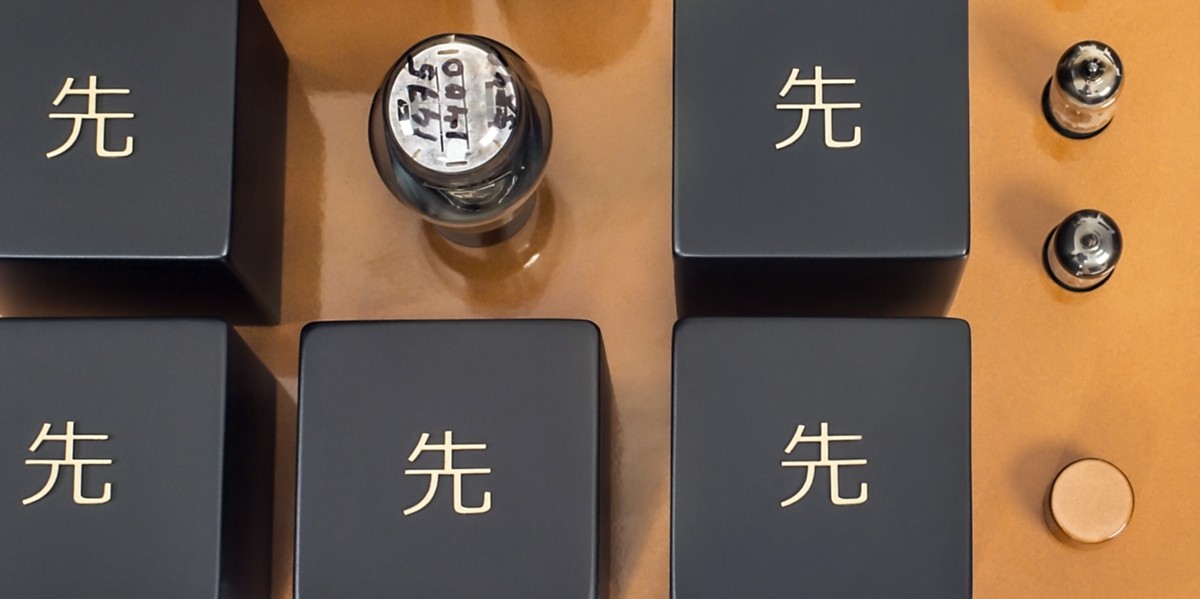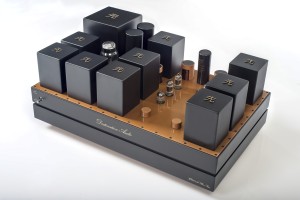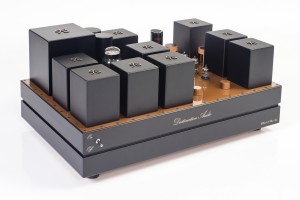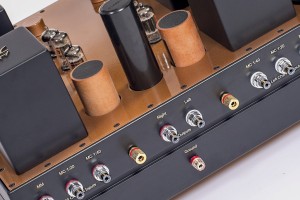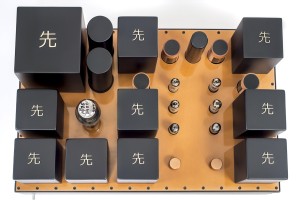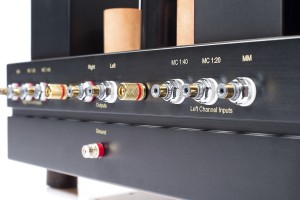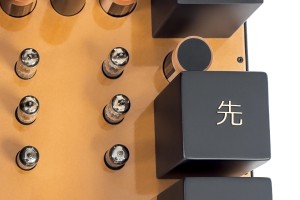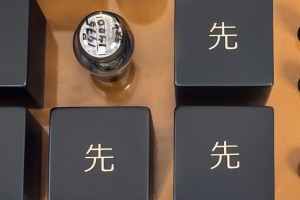Destination Audio is the fruit of the great passion and determination of one man, Włodek „Sam” Wiśniewski. The brand made its name primarily as a loudspeaker manufacturer but it’s only a part of its portfolio which features also tube electronics. For this review, Sam delivered a representative of the latter, namely Destination Audio WE 417A phono stage.
Introduction
Destination Audio is one of those few Polish audio brands that are better known and way more appreciated on the other side of the Atlantic than here, at home. There is a reason for it. First of all, the man behind the brand, over there known as Sam Wiśniewski, spent several years in the USA, and he treats it as his second homeland. Secondly, his customers recruit among the most demanding and, let’s be honest, wealthiest audiophiles and music lovers and there are more of them over there than here. Thirdly, both his loudspeakers and electronics represent not that big a niche of the audiophile market, as neither horns speakers nor tube amplifiers belong to the most sold components, hence the number of potential customers is counted rather in dozens, not hundreds or thousands a year.
As I already mentioned a few times in other reviews, due to health issues I did not attend the last Audio Video Show in Warsaw hence missing a chance to listen to the Destination Audio presentation and meeting Włodek, a.k.a. Sam (again). I’d met him before more than once, and last year we even had a very nice, long conversation and talked about me reviewing his latest (and smallest, which was kind of a point) speakers – NiKA. It hasn’t happened (yet!) because of how Destination Audio operates, which is based on making products to order – I’ll get back to that in a moment. Some time after the Show though, Włodek called me and invited me to his place to listen to his system and discuss a review of his phono stage. I gladly accepted.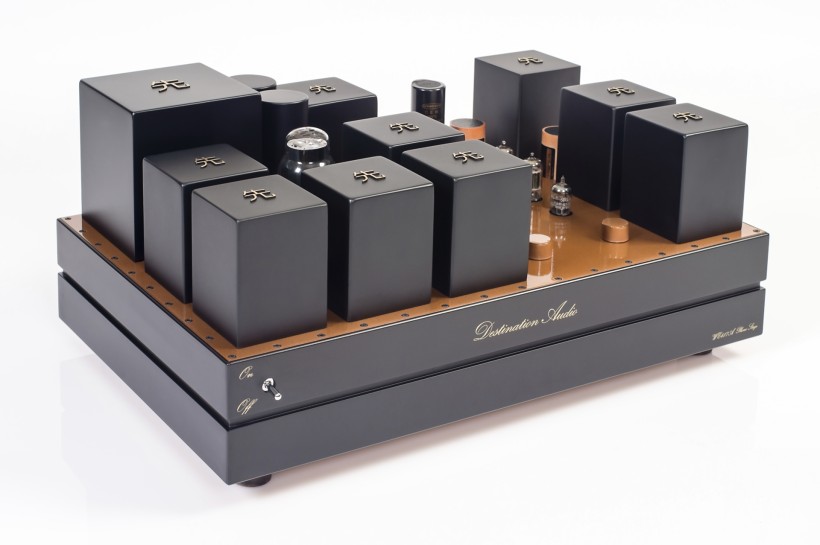
I went there on Saturday’s early afternoon and got back home… after midnight. That should tell you how much of a good time I (or we) had. We did spend a lot of that time listening to the music, which, despite using quite a non-audiophile source for Destination Audio’s amplifiers and speakers, sounded really good, natural, and immersive. We also talked for hours about the whole story behind the brand and the man who created it. The story is quite unusual, as some of you probably already know, since Włodek aka Sam, is a self-taught designer, a man who loves music, live performances in particular, and who got where is today due to incredible determination. He learned everything he needed to know to develop his devices, and through hard work, making a lot of errors on the way, finally succeeded in achieving his goal – developing speakers, a phono stage, and amplifiers that played music in a way that he personally truly enjoyed and considered worth sharing with others.
As it turned out his friends, who shared a passion for music and good sound, loved the system he developed for himself. And so, he had to make more speakers and amplifiers for them. Once he did, and got a lot of feedback, also from friends from the music industry, Sam decided that it was time to get his creations evaluated on one of the most (if not the most) demanding markets – the USA. As he told me, he had to borrow quite a lot of money to prepare a system, ship it to America, and get a room at one of the biggest audio shows in the country. The show was actually sort of the one and only shot he got, something that was to determine the future of the whole project. He would either succeed and start selling his products, or fail and close up shop to go back to his regular life.
The presentation at the show turned out to be a huge success. His room was visited by most key editors and later favorably described in their coverages of the show. Hundreds of people came too, listened, and expressed their appreciation for the performance of the Destination Audio setup. Yet, as most entrepreneurs realize, praises don’t pay bills. Despite the huge success at the show, there was no follow-up, and no customers or distributors came forward to at least buy the set presented at the show. In practical terms, it meant covering another, significant cost of shipment back to Poland. And then… a customer reached out who wanted to audition and potentially buy the speakers that made so much buzz at the show. Sam rented a van, and took the whole system with him down to Texas just to make sure his speakers had a chance to truly shine. Long story short, the man bought the whole setup despite already owning another, very expensive one. What’s more, as Sam admits, he decided to help him with promoting Destination Audio in the USA. That’s how the story of the brand’s success began.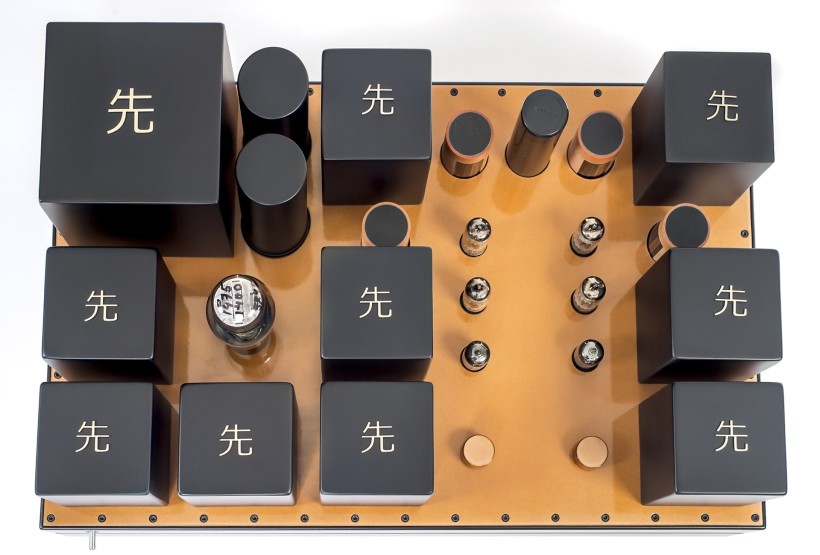
In Poland brand remained fairly unknown at least until a few years back, when Włodek decided to start showing his speakers (at first) and electronics (later) at the Audio Video Show in Warsaw. During the last few editions, he shared a room with Grobel Audio, distributor of such brands as Jadis, Serblin, or Koetsu (among others). Every year in their room the gentlemen prepared setups that not only sounded great, but became sort of a sanctuary for all those, who were tired after visiting many other very loud, and often somewhat „showy” presentations. The words describing these systems that keep repeating every year in the feedback from both, journalists and audiophiles visiting this room were: natural, smooth, coherent, highly musical, and so on. That’s also why I never missed a chance to visit the room, and that’s also why I was very eager to get at least some of Wlodek’s components to my room for a more credible evaluation. This year, it finally happened, and, spoiler alert (!), it was worth the wait.
Design and features
Those of you, who are familiar with Destination Audio WE 417A may be a little surprised to see the devices in the photos in this review. Until recently, it was a two-box design with a separate power supply unit. The designer though, decided to make some, mostly aesthetic changes to this model. Inside it is (almost) the same circuit (we will get into some details in a moment) but on the outside it is quite different, as it is now a single unit. It looks like two chassis put one on top of the other, but it is a single unit and there are no external cables connecting them. The total weight is very similar but now one has to ship and carry it in one 51kg (!) piece. I saw both versions and in my opinion, the latest (and only one available from now on) looks even better. Losing the connection between separate units could introduce some advantages as well, although Włodek said, that soundwise it is exactly the same, so no reason (other than aesthetical) for owners of the „old” version to replace it with the new one.
To the point. Destination Audio WE 417A is an MM/MC tube phono stage. It is a pure triode circuit working in Class A with no negative feedback. It features a large, measuring 560x350x260 mm (or 22x14x10.5 inches) beautifully made and finished sturdy chassis with a 4mm thick copper top plate. Together with all the circuits and transformers inside the size translates into 51Kg (112 Lbs) net or 70 Kg (154 Lbs) shipping weight. In other words, it is quite a beast. Considering the fact, that it is a tube Class A design which means it gets quite warm during operation, one has to remember to ensure a sturdy stable surface to put it on and enough space around for the heat to properly dissipate.
The chassis looks stunning due to the quality of craftsmanship, elegant copper top, and transformers’ cans (each of them) marked with a Kanji, one that has several meanings, but the one intended for this use was of course „Destination”. The front features only a flip on/off switch which only adds to the general „old-school” vibe of the tested phono stage, and the whole device rests on four feet. While Kondo products may still constitute an unmatched benchmark for me when it comes to aesthetics, WE 417A comes really close as it is simply a beautiful device that I would be proud to have in my system (for the looks, we’ll get the performance in a short while).
If you wonder about the name of this model your curiosity should be satisfied once you check the tube complement – the tested device features two WE417A tubes in the first stage and four 5687 in the second and third one. To achieve top performance the designer decided on an entirely transformer-coupled design utilizing top-quality custom-made amorphous transformers. The only downside of this type of transformer is its break-in time, which, according to Włodek, is at least 400-500 hours – that’s when they and the whole device achieve top performance.
The power supply also features a tube, or tube rectifier, namely 5U4G. As already mentioned, it is a single-chassis design, although it is visually and actually divided into lower and upper parts using a thick copper plate acting as a shield between them, with the power supply section occupying the lower part. Aiming at achieving top-level performance the designer decided to use top-quality components such as, for example, Duelund PIO capacitors, custom-made amorphous step-up transformers, or WBT connectors. The RIAA correction is based on custom-made LRC transformers.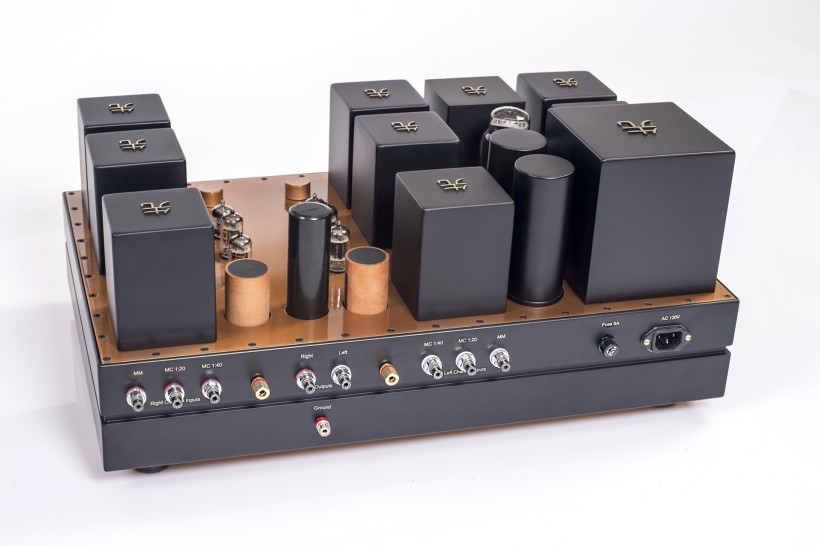
The only difference between this current and the previous two-box version of WE 417A is two, instead of one step-up transformer (1:20 and 1:40) which makes it an even more versatile device that will work perfectly with low- but also bit higher-output Moving Coil cartridges. There are separate custom SUTs and that is why the device offers three RCA inputs, one for MM, and two for (Low and High) MC pickups. The device provides a gain of 51 dB for MMs, 77 dB for MC Lows, and 83 dB for MC Highs. It also allows setting input impedance of 47 kΩ for MMs, 40-200 Ω for MC Lows, and 4-40Ω for MC Highs.
Sound
I said it many times before, but let me do it again. In my experience, the very best phono stages come with tubes onboard. Whether they are tube devices through and through or hybrid designs, whether they come from Kondo, Audio Tekne, Ypsilon, LampizatOr (see HERE), Doshi Audio (see HERE), or Tenor Audio, to name a few, from my perspective, it seems that at least some tubes have to be involved to achieve the ultimate level of performance. Again, that’s my experience so far, which is not to say, that there are no remarkable solid-state devices, as the recently reviewed Aavik R-280 (see HERE) clearly proved, as did not that expensive, but highly impressive GrandiNote Celio mk IV (see HERE) or ESE Lab Nibiru (see HERE), that I use as my references. The reviewed Destination Audio WE 417A is a tube device and, as the price clearly suggests, it aspires to be a member of an exclusive club of the best phono preamplifiers money can buy. I was eager to find out whether it really had what it takes to belong to that category.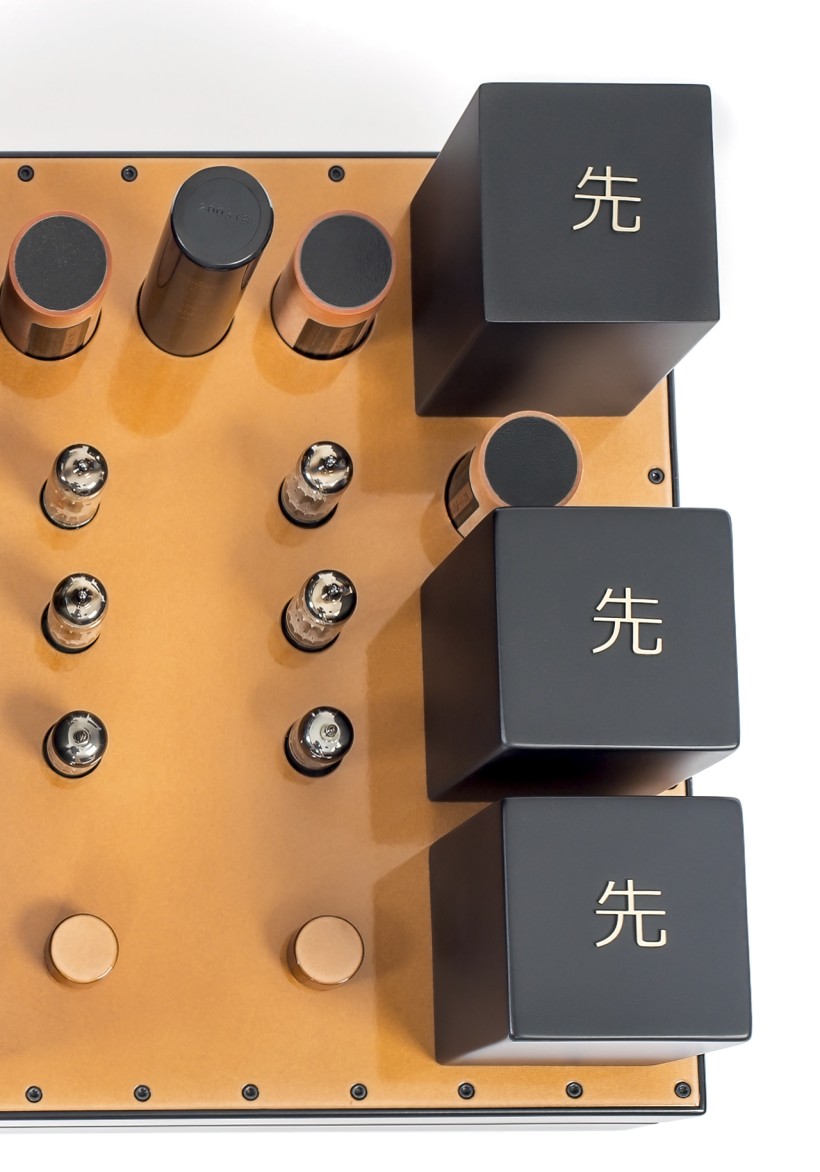
At the time of the test, I had two top-notch cartridges at my disposal. My trusted Air Tight PC-3 was installed in J.Sikora KV12 Max tonearm, and the remarkable and (extremely) expensive Analog Relax EX-2000 was installed in J.Sikora KV12. The deck was my J.Sikora Standard Max. My reference phono stages are clearly way less expensive than Destination Audio, though both punch way above what their prices suggest, and they were my reference points for most phono stages I’ve ever reviewed. To be clear, both, Grandi Note Celio MK IV, and ESE Lab Nibiru in the latest version, are solid-state devices. Let’s finally get to it.
Three days later… It might be a cliche, but it did happen to me this time, the same as it had no more than a handful of times before when reviewing some of the best of the best and most liked (by me!) audio components (these two don’t have to be the same). I selected some albums for the initial stage of critical listening, cued in the first one, and sat comfortably in my chair with my laptop on my lap, ready to assess the sound and take notes. I listened to them (albums) all without writing a single word down (actually I quickly put my computer away) and then prepared another stack of records for further listening. This time the choice was more about my curiosity, about finding out what would they sound like with Destination Audio WE 417A, regardless of whether they were the usual test records, or not. With the second stack, I still didn’t come around to assessing the device. I simply kept enjoying the music because the way the tested phonostage presented it was so incredibly natural and engaging that writing about it seemed to be a waste of time.
At some point, however, I had to start doing my job. When it came to it I realized it would be quite a challenge to convey to you, how brilliant and unique in many ways Destination Audio WE 417A was. The point is that it is one of those cases where checking the „audiophile qualities” list would be mostly useless. In this case, it is not about this component being best at some particular sonic qualities, but rather about the whole it puts together. One that keeps a smile on the listener’s face for hours encouraging him/her to cue in more and more records to stay in this state of joy for as long as possible. Yes, Destination Audio We 417A is that kind of a component. It’s all about music, expression, emotions, and enjoying music presented in a way only very few other phono stages I know can match.
To try and describe it to you let me begin with a vague explanation, that the performance of the setup including my remarkable J.Sikora deck and tonearm, outstanding Analog Relax and Air Tight cartridges, and the reviewed Destination Audio WE 417A phono stage turned out to be… a pure magic. Pretty specific, isn’t it? Let’s try it again. Listening to the music, almost any music, was a mesmerizing, intoxicating, and totally immersive experience due to the absolutely organic feel of every album I played. The genre didn’t matter much, the release date (old, new, reissue), label, and so on didn’t matter, and even the quality of the release seemed to matter less than with most other top phono stages (which doesn’t mean it did not matter at all – it did!).
It’s not, mind you, that the albums were not properly differentiated – each of them had its own distinct character, mood, pace, instruments and/or vocals involved, and so on, yet each of them sounded (almost) equally amazing in terms of music and emotions and mood leaving sound/pressing quality (or issues) somewhat behind. In other words, the constant awe I was in wasn’t about the quality often (wrongly, if you ask me) attributed to tube devices, namely of making everything sound good, and listener-friendly, and, as a result, alike. It wasn’t that at all! All the records sounded good, some damn good (to my ears), but different good. Each of them was original in some ways, and the Destination Audio phono stage perfectly conveyed their uniqueness. It was actually one of the reasons why I kept adding more and more records to the stack, not necessarily the best sounding „test” ones, as I wanted to know, how would this phono stage „handle” them. And it kept on delivering one exciting performance after the other letting me listen to a number of records that had kept gathering dust on the shelves before because of less-than-perfect quality.
It would be easy to just say, that whatever music genre you prefer (maybe except for trash metal or some super-bass-heavy electronic music), or whether your collection features only top-notch-audiophile-quality albums or not, I am pretty sure that the Destination Audio WE 417A phono stage will be a bringer of pure musical joy. Unless, which is totally fine, you prefer a highly analytical, super-tonally-neutral presentation, because then the likes of aforementioned Aavik, or even my ESE Labs Nibiru, will better suit your needs. Destination Audio We 417A does not focus on providing you with explicit details but rather uses an abundance of those to compose a lush, coherent, natural whole. It would be easy to end the review here but my job is to offer you some specifics, and some insight into the performance of any tested component to let you what can you expect from it. So let me keep trying to do that.
The more time I spent with Destination Audio WE 417A in my rig the more sure I became that it would let every album one throws at it (assuming the rest of the setup can keep up, obviously) shine in its own way, clearly displaying their (technical) pros and cons while focusing on and putting first the musical, or artistic value. That’s the most important fact about this phono stage – music is always in the foreground and all the technical aspects of every release are just the background. Sure, the background influences the foreground, but only in a limited way, and unless it is really, really poor, and the foreground (music) is not particularly interesting in itself, it won’t affect enjoying the recorded performance. That’s the true „magic” of this phono stage – it puts the music first and gets you immersed in it, emotionally involved to the point, that you forget about everything else.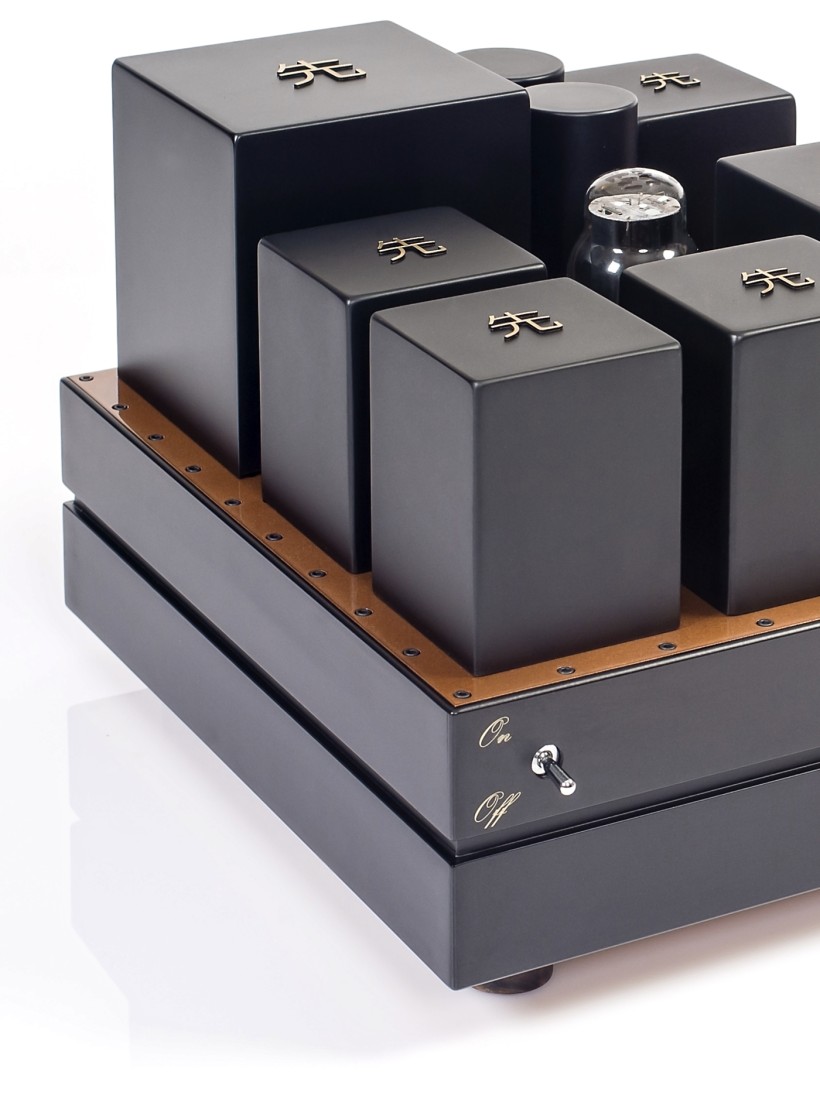
In that, Destination Audio reminded me of live performances. I don’t know about you, but when I go to a concert and the musicians of my favorite band start to play it becomes the only thing that really matters. Not some technical issues, not the imperfect acoustics of the venue, but this amazing, unique, highly energetic, totally immersive experience that only music performed live has to offer. WE 417A did the same thing, although obviously to a somewhat lesser extent but still better than most competitors. It focused my attention exclusively on music and the emotions that come with it, and the vibe of something special happening in front of me was each and every time overwhelming, and it was there even with the less-than-perfect recordings such as, for example, old live albums by Dżem and Perfect. I got real goosebumps when I cued them in as in both cases despite technical imperfections the captured performances played by Destination Audio turned into so incredibly intense, and emotionally involving experiences that my body reacted involuntarily to it. That’s the beauty and power of music and some of the best audio components and systems.
It was also one of the ways the „tubeness” of the WE 417A occurred – the presentation was highly resolving and an abundance of information translated into a smooth, incredibly rich, saturated, natural, and coherent presentation that at the same time was clean, and transparent, but never analytical. That’s why I could keep on playing non-audiophile records knowing, it would be real fun despite their imperfections. And so I chose some rock albums by U2, Genesis, Aerosmith, and even AC/DC. Tubes on board obliged, so to speak, and as expected, Destination Audio WE 417A delivered a remarkably rich, fluid, colorful, energetic, and even palpable (as much as rock recordings could be) midrange. And since rock music is largely based on this part of the range – vocals, electrical guitars, keyboards – they all needed to be conveyed in a very convincing way to make it work.
The Destination Audio phono stage did a terrific job at it. It allowed me to enjoy the charismatic vocals of Steven Tyler, Brian Johnson, or Bono, but also energetic guitar licks by Joe Perry, Angus Young or The Edge (and others). The sound was rich, dense, powerful, and intense, with a touch of aggressiveness and/or sharpness when needed, although, to be clear, solid-state phonos, or even the hybrid Tenor Audio, conveyed the rawness of rock music in a bit more convincing way. What about bass you may ask, as it is an important part of the range for rock music too. Well, unlike some tube amplifiers I know (which, by the way, have a much more demanding task of driving speakers), tube-based phono stages, I mean the good ones, usually offer a deep, tuneful, well-differentiated but also quite fast and tight bass. WE 417A turned out to be one of those cases and a very accurate PRAT was another quality that allowed me to fully enjoy every rock and blues album I cued in.
To learn how refined Destination Audio WE 417A was I had to finally rich for some audiophile recordings/releases as well. One of the albums that belong to my favorites (even after one of the musicians told me he thought it could have been done better) is „Spirit of Nadir” recorded by Oleś brothers. What I love about it is not only the very natural timbre of Marcin’s large and powerful, but still a touch soft sounding double bass, the very live-like sounding drums played by Bartłomiej, but also the overwhelming feeling of the whole magic happening somewhere in the open space in some distant desert. To be clear, it is a studio recording, and yet, whenever I play it on a good setup I feel like I sit on the sand with the guys, listening to them telling me a beautiful, slow-paced, yet totally immersive story. The tested phono stage did an incredible job in terms of surrounding me with a huge, open space filled with air that created a magical background for the beautiful musical story.
Assessing a tube phono stage required checking out some great live acoustic and vocal albums. And so I cued in some classics, including, among others, Arne Domnerus’ „Jazz At The Pawnshop”, Ray Brown Trio’s „The Red Hot”, Patricia Barber’s „Companion”, or one of my all-time favorites „Friday Night In San Francisco”. It was clear from the start, that such high-quality recordings let Destination Audio WE 417A shine even brighter. On the first album, I always look for the non-musical cues first – the sounds from the room (and its acoustics), people talking, and the clutter of cutlery that all gradually die down when people get involved in the performance. It was all there conveyed in a very realistic way (almost) convincing me that I was transported through the time and space to this Swedish club. And when the music entered the instrument I was looking forward to was vibes. It was truly vibrant, energetic, open, and agile and the decay and reverb spreading around the club sounded the same as I remembered it from the few other best presentations of this album.
On Patricia Barber’s album and Ray Brown’s at first, the most important instrument (for me) was the double bass. Both sounded incredibly real and natural, deep and powerful, and yet different. In both cases though, the bass extended really, really deep and the lowest notes carried a lot of energy, enough to make me not only hear but also feel the power of this instrument. When Patricia started singing with her deep, warm, a touch dark, and powerful voice, she immediately grabbed my attention. It felt like a spotlight was turned on bringing her out of the dark and placed her almost within reach from where I sat. All about it was natural, even sibilance in her voice. The whole presentation, the same as on every of the aforementioned albums, and many more that came later, was highly resolving, delivering, but not emphasizing (!), an abundance of details and subtleties that enriched the whole musical experience elevating it to the level that only a handful of other phono stages before Destination Audio WE 417A ever had before.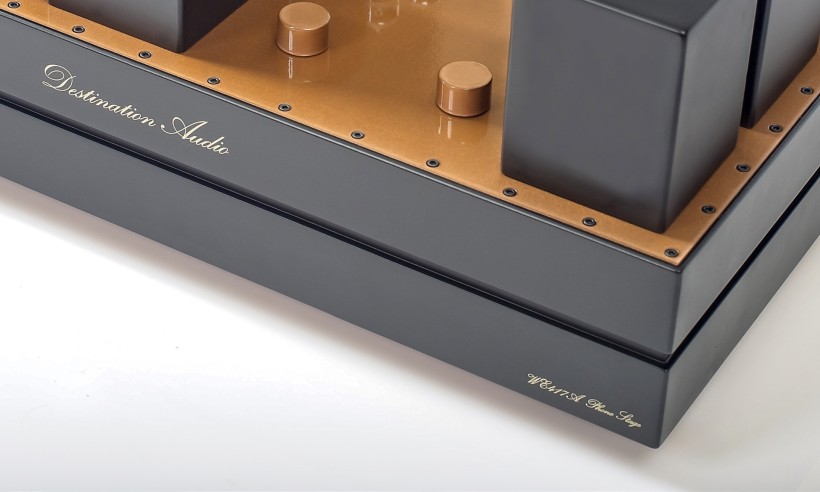
One day, when I was almost wrapping the review up, a package arrived with a highly anticipated album (or two – depending on how you count them) of one of my favorite Polish blues bands, the already mentioned before Dżem. Almost 30 years after the original release on CD, they finally prepared also vinyl versions of „Dżem Akustycznie” and „Dżem – Suplement”. With these new releases of old Polish music one never knows what to expect in terms of a release and pressing quality. I still couldn’t wait to listen to it and played it on this incredible rig with EX-2000 on my J.Sikora deck paired with Destination Audio WE 417A. It was immediately clear, that the label did a really good job with the material. And the aforementioned analog setup did a great job of offering me a very „here and now” experience. The feeling of musicians’ presence was as strong as ever (and that’s a studio recording!). The clarity and transparency of the sound were impressive, and the resolution was more than good, which is unusual for the recordings from that period. The presentation was coherent, natural, and highly immersive benefiting fully from the vocalist’s charisma. The same album played with my own ESE Labs Nibiru was not quite as palpable and realistic, it didn’t offer me quite the same feeling of witnessing the performance as the tested WE 417A did.
Shortly after I finished my assessment of Destination Audio WE 417A but before this review was published I got another top phono stage for a review, namely Kondo GE-10i which gave me a chance to compare the two. While both are tube devices and both, no doubt, belong to the top echelon of phono preamplifiers, they sounded different enough so that it would be easy to pick one or the other based on personal preferences. The reviewed Destination Audio was the touch sweeter, touch softer, touch more palpable, more here and now performer. Kondo, on the other hand, seemed a bit more focused on the precision and clarity of the sound, and the general character, while also incredibly natural, was more neutral. It was the Polish phono stage that seemed to sound even denser and richer, while the Japanese was the more transparent one offering a deeper insight into played recordings.
Both presented an excellent midrange performance, but again, WE 417A was more about the body, richness, and depth of the sound, while GE-10i turned out to focus more on delivering a very precise, orderly, and amazingly dynamic performance. The former delighted me with imaging but based on density and palpability of the sound, and with the very convincing impression of things happening here and now, while the latter achieved equally convincing results due to the precision of placement of each instrument on the stage, and their contours were drawn with a sharpie rather than broad strokes of a brush.
Very generally speaking, WE 417A was the warmer sounding one (but within limits of natural sound), and GE-10i was more neutral, but definitely not a „cold” one. This would place the former in one (based on general sonic characteristics) group with my GrandiNote Celio mk IV, Closer Acoustics Flō, or Allnic Audio H5500 (although Destination Audio belongs to the top echelon in terms of sound quality), and the latter among the likes of Doshi Audio Evolution Phono Preamplifier, Tenor Audio Phono 1, or Thöress Phono Enhancer. They are all fantastic phono stages, they all provide remarkable performance, yet each of them is in some ways unique. The ultimate choice between Destination Audio and Kondo would definitely be based not on class as such, in both cases of the highest order, but rather preferences, and sonic character of a cartridge(s), and the whole setup.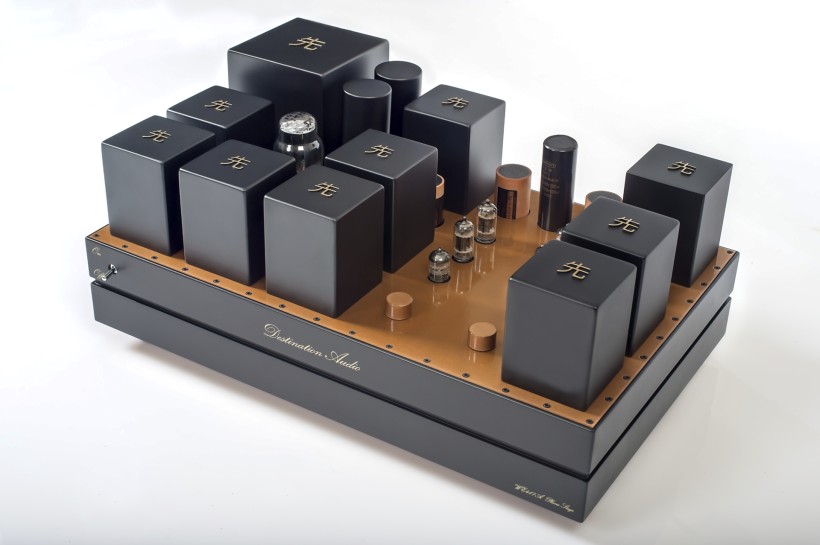
Summary
Destination Audio WE 417A, no doubt, belongs to the high-end category (I don’t recognize top-high-end as a separate one). Choosing, among the ones I had a chance to listen to, between WE 417A, Kondo GE-10i, AudioTekne TEA 8695, Tenor Audio Phono 1, Doshi Audio Evolution Phono Preamplifier, Air Tight ATE-3011, Thöress Phono Enhancer, and a few others belonging to the same group of the „best of the best I know” would be based on personal preferences or maybe practical issues (preferred/required features). These are all incredibly refined, resolving, coherent, natural-sounding devices that turn listening to records into an almost spiritual experience. In my case, as my stereo system’s only job is to bring me the joy of experiencing music, WE 417A would be a very likely ultimate choice.
So who will choose Destination Audio over the others? A true tube lover. Yes, almost all of the phono stages mentioned above are tube or hybrid designs, but each of them has its own sonic character. WE 417A is the most tube-sounding among them. Tube-sounding in the best possible meaning of this fraze. It’s not too warm, not too slow, it doesn’t blur the leading edge, the bass is not boomy with it, and it does not focus solely on the midrange. Tube-sounding means incredibly rich, lush, coherent, palpable, three-dimensional, and yet also open and vibrant sound. The bass is tight and fast (enough), yet deep and tuneful, and well-differentiated. The midrange is, simply put, beautiful, colorful (not colored!), highly expressive, smooth yet clean and transparent, brimming with energy and dynamics. Treble, that’s tubes’ specialty, is sweet and filled with air, open, breathing, vibrant, delicate, when needed, but properly responsive when a fast, hard impulse has to be conveyed.
All that wouldn’t mean much if the phono stage didn’t put all those qualities so skillfully together delivering an amazingly coherent, natural whole. That is why Destination Audio WE 417A will let you not only listen to but truly experience and enjoy almost any album regardless of music genre. It does differentiate recordings very well, but always focuses on the music layer of any recording putting it in front of the technical one thus emphasizing the role of the former. It means that you should enjoy not only the best releases in your collection but also those less-than-perfect ones (in technical terms), containing some excellent music. So beware (!) – Destination Audio WE 417A is a highly addictive, top-class phono stage. Once you get hooked it will be really hard, probably impossible, to shake it off. I see no other choice but to count it among the very best I know and award it with our
All photographs used in the review by Przemysław Sontowski
Price (when reviewed):
- Destination Audio WE 417A: 35.000 USD
Manufacturer: DESTINATION AUDIO
Technical specifications (according to the manufacturer):
- Pure triode class A. No negative feedback
- Dual chassis design with internal separation of power supply and pre section separated by a thick copper plate
- All point-to-point wiring
- RIAA correction based on custom-made LRC transformers
- Custom-made step-up amorphous transformers
- Custom-made amorphous interstage transformers
- Duelund PIO capacitors
- 4mm thick copper top plate
- Inputs: 1 pair RCA MM 47K, 1 pair RCA MC-1:20, 1 pair RCA MC 1:40
- Output: 1 pair RCA
- Frequency response (RIAA): 20 Hz ~ 20 kHz (± 0,15 dB)
- Gain: +51dB (MM); +77dB (MC Low), +83dB (MC High)
- Input impedance: MM – 47KΩ, MC Low 40-200Ω, MC High 4-40Ω
- Output impedance: <200 Ω
- Total harmonic distortion (THD): < 0,3%
- Tubes: Power supply: 5U4G rectifier
- Phono stage: 2 x WE417A first stage, 4x 5687 second and third stage
- Dimensions: 560x350x260 mm / 22x14x10.5 inches
- Weight: 51Kg / 112 Lbs
- Shipping weight: 70 Kg / 154 Lbs
Associated equipment:
- Digital source: a custom passive server with WIN10, Roon, Fidelizer Pro 7.10, JCAT NET XE, and JCAT USB XE cards with FERRUM HYPSOS Signature power supply, KECES P8 (mono) linear power supply for the server, JCAT USB Isolator
- D/A Converter: LampizatOr Pacific 2 +Ideon Audio 3R Master Time (USB signal regenerator)
- Analog front end: J.Sikora Standard MAX turntable, J.Sikora KV12, and J.Sikora KV12 MAX tonearms, AirTight PC-3, phono stages: Grandinote Celio MK IV, ESE Lab Nibiru V 5.
- Power amplifiers: GrandiNote Shinai, Circle Labs M200, Art Audio Symphony II (modified)
- Preamplifier: Circle Labs P300
- Loudspeakers: GrandiNote MACH4, Ubiq Audio Model ONE Duelund Edition.
- Interconnects: Bastanis Imperial x2, Soyaton Benchmark, Hijiri Million, Hijiri HCI-20, KBL Sound Himalaya 2 XLR, David Laboga Expression Emerald USB, David Laboga Digital Sound Wave Sapphire Ethernet
- Speaker cables: Soyaton Benchmark
- Power cables: LessLoss DFPC Signature, Gigawatt LC-3
- Power: Gigawatt PF-2 MK2 and Gigawatt PC-3 SE Evo+; a custom power line with Gigawatt LC-Y in-wall cable; Gigawatt G-044 Schuko and Furutech FT-SWS-D (R)
- Network: Silent Angel Bonn N8 + Silent Angel Forester F1 + optical LAN isolator
- Racks: Base VI, Rogoz Audio 3RP3/BBS
- Anti-vibration accessories: ROGOZ-AUDIO SMO40 and CPPB16 platforms and ROGOZ AUDIO BW40MKII feet, Franc Accessories Ceramic Disc Slim Feet and Wood Block Platform, Graphite Audio CIS-35 and IC-35


